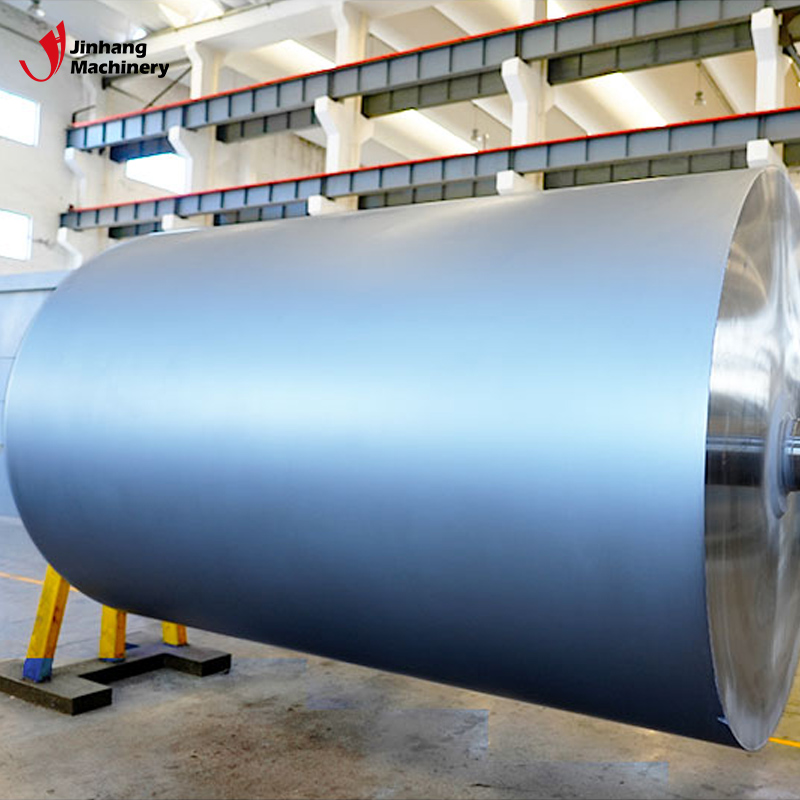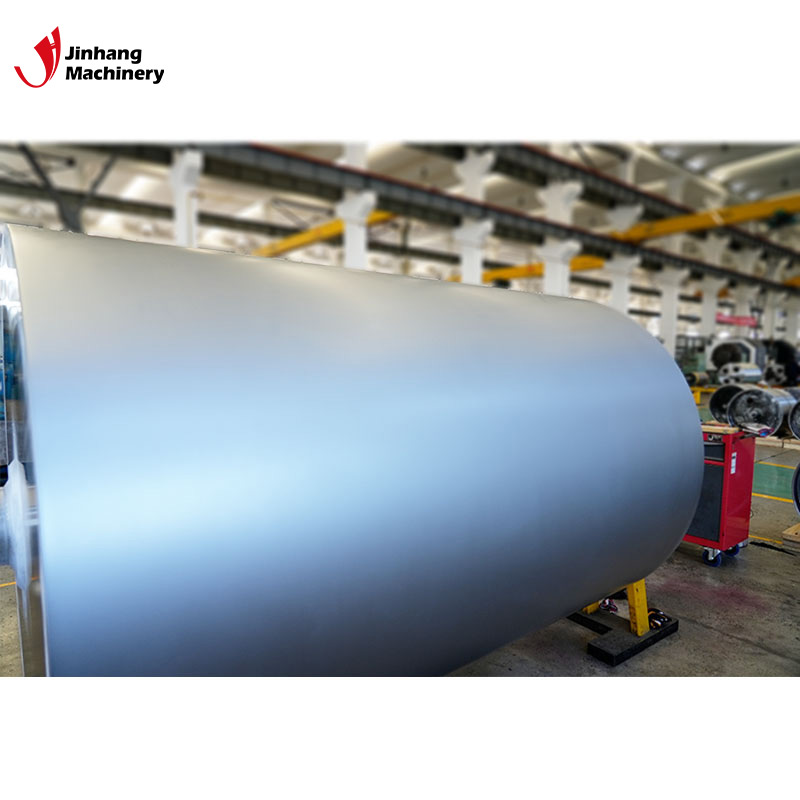What is the electroplating process of water quench roller?
Water quench roller is a widely used mechanical equipment in modern industrial production, especially in the fields of steel, metallurgy, mechanical processing, etc., it plays a vital role. Water quench roller is subjected to high temperature, high pressure and erosion of corrosive substances during operation. Therefore, the surface treatment of the roller is crucial to its performance and life. In order to improve the wear resistance, corrosion resistance and high temperature resistance of water quench roller, surface electroplating process has become one of the common treatment methods.
As an efficient surface treatment method, electroplating technology can greatly improve the performance of water quench roller by plating a layer of metal or alloy on the surface of the roller, making it work better in harsh environments. This article will discuss the surface electroplating process of water quench roller in detail, analyze its various steps and its role in improving roller performance.

What is the role and electroplating demand of water quench roller?
As an indispensable key component in the metallurgical and steel industries, water quench roller is mainly used to cool metal materials after rolling. Its working environment is very harsh. The roller surface needs to withstand high temperature, strong corrosive media erosion, and strong physical wear. Therefore, the surface material of the water quench roller must have high high temperature resistance, corrosion resistance and wear resistance. The electroplating process is one of the effective ways to improve these properties.
The main purposes of electroplating of water quench roller include:
· Enhance wear resistance: By electroplating hard metals such as chromium, nickel, etc., the hardness of the roller surface can be effectively increased, wear can be reduced, and the service life can be increased.
· Improve corrosion resistance: Electroplating can effectively increase the oxidation resistance and corrosion resistance of the surface metal, so that the roller maintains good stability in harsh working environments.
· Improve thermal stability: The electroplated layer can maintain its strength and durability at high temperatures, and prevent deformation or surface damage under high temperature conditions.
· Reduce friction coefficient: The electroplated layer can change the roughness of the roller surface, reduce the friction coefficient when in contact with the material, reduce energy consumption and improve production efficiency.
Therefore, by treating the water quench roller with surface electroplating process, its performance and service life can be significantly improved, maintenance costs can be reduced, and production efficiency can be improved.

What are the steps of surface electroplating process of water quench roller?
The electroplating process is a complex process involving multiple steps, and the details and control of each step will directly affect the final electroplating effect. The electroplating process of water quench roller usually includes the following key steps:
1. Pretreatment
Pretreatment is a crucial step in the electroplating process, which provides a good adhesion basis for the subsequent electroplating layer. The cleanliness of the surface of the water quench roller directly affects the quality of the electroplating layer. Improper pretreatment may cause the electroplating layer to be poorly adhered or peeled off.
The main steps of pretreatment include:
· Degreasing: The surface of the water quench roller is prone to adhere to impurities such as oil, lubricants, etc. during use, and the surface oil must be removed by chemical solvents or mechanical means.
· Pickling: The surface of the water quench roller is pickled with an acidic solution (such as hydrochloric acid or sulfuric acid) to remove the oxide scale, rust layer and other dirt on the surface. After pickling, a layer of tiny pores will form on the surface, which is conducive to the adhesion of the electroplating layer.
· Water washing: After pickling, the surface needs to be thoroughly rinsed with clean water to remove residual acidic substances and avoid affecting the subsequent electroplating process.
· Electrolytic cleaning: In some cases, electrolytic cleaning may be required to further remove surface dirt. This process uses electric current to dissolve dirt and impurities on the surface of the water quench roller in an aqueous solution.
After the pretreatment is completed, the surface of the water quench roller should be smooth and clean to ensure that the electroplating layer can be evenly attached.
2. Electroplating layer deposition
Electroplating layer deposition is the core step of the electroplating process. In this process, metal ions are reduced to the surface of the water quench roller through electrolytic reaction to form a metal plating layer. Common electroplating metals include chromium, nickel, copper, zinc, etc. Different metals can give rollers different properties.
· Nickel plating: The nickel plating layer has good corrosion resistance, wear resistance and good bonding strength, and is often used for surface protection under general conditions.
· Chrome plating: The chrome plating layer has excellent wear resistance and hardness, and is often used in situations requiring high wear resistance. The hard chrome electroplating layer usually has a higher hardness, which can effectively extend the service life of the water quench roller, especially in high temperature and strong corrosive environment.
· Copper plating: The copper plating layer has good thermal conductivity and oxidation resistance, and is usually used for some special electroplating needs, such as water quench rollers that improve thermal conductivity.
· Composite plating: Composite electroplating refers to the electroplating of different metal layers. Common ones include nickel-chromium composite electroplating and nickel-copper composite electroplating. It can combine the advantages of multiple metals and meet the needs of more complex working environments.
During the electroplating process, it is necessary to accurately control parameters such as current, voltage, solution temperature, pH value, and plating solution concentration to ensure the uniformity, adhesion, and hardness of the electroplated layer.

3. Post-treatment
After the electroplating layer is deposited, the surface of the water quench roller still needs further treatment to ensure the stability, finish, and durability of the electroplated layer. The main steps of post-processing include:
· Passivation treatment: Passivation is a common process after electroplating. It mainly forms a protective film on the surface of the electroplating layer by chemical methods, thereby improving the corrosion resistance of the electroplating layer. The passivation layer can effectively prevent the erosion of external substances and enhance the anti-oxidation ability of the electroplating layer.
· Drying: The water quench roller after electroplating needs to remove the moisture on the surface through the drying process to prevent the residual moisture from causing the peeling or corrosion of the electroplating layer.
· Polishing treatment: In order to improve the smoothness and aesthetics of the roller surface, the electroplating layer is usually polished after completion. Polishing can not only improve the surface appearance, but also further improve the wear resistance and reduce friction of the surface.
· Hardening treatment: In some cases, in order to improve the hardness of the electroplating layer, the water quench roller after electroplating needs to be heat treated or laser hardened. This process can further enhance the wear resistance and hardness of the electroplating layer.
4. Quality inspection and testing
After completing electroplating and post-processing, strict quality inspection must be carried out to ensure that the quality of the electroplating layer and the performance of the water quench roller meet the requirements. Common inspection items include:
·Thickness inspection: Use special instruments to measure the thickness of the electroplating layer to ensure that it meets the design requirements.
·Adhesion inspection: Check the adhesion of the electroplating layer through peeling test, scratch test and other methods to ensure that the electroplating layer is firmly attached to the roller surface and will not fall off due to friction and impact in the working environment.
·Hardness test: Perform hardness test on the electroplating layer to ensure that its hardness meets the required standard and meets the wear resistance requirements.
·Corrosion resistance test: Evaluate the corrosion resistance of the electroplating layer through salt spray test and other methods to ensure that it can remain stable in harsh environments.

Improvement of water quench roller performance by electroplating process
After surface electroplating process, the performance of water quench roller has been significantly improved. Specifically, it is manifested in the following aspects:
·Improved wear resistance: The electroplating layer can significantly increase the surface hardness of the water quench roller, resist wear caused by friction, and thus increase the service life of the roller.
· Enhanced corrosion resistance: The electroplated water quench roller has stronger corrosion resistance, can resist the erosion of acidic and alkaline substances, salt spray and other environmental factors, and ensure the stability of the roller in harsh environments.
· Enhanced thermal stability: The electroplated layer has high high temperature resistance, can remain stable under high temperature working conditions, and avoid surface aging or deformation due to high temperature.
· Improved processing accuracy: The surface of the water quench roller after electroplating is smooth, which reduces friction, ensures the processing accuracy of the material, and improves production efficiency.
Cost-Effective Customized Rolls Supplier with Professional After-Sales Service
Looking for cost-effective, customized industrial rolls? JH Machinery manufactures a broad range of rolls including rubber, polyurethane, and carbonized coating rolls tailored to your requirements. Our China factory is equipped with the latest technology to ensure precision and durability. We offer factory-direct pricing, bulk discounts, and a professional after-sales team that handles warranty repairs and replacements promptly. Contact us to get a competitive quote and learn about our latest promotional offers!
